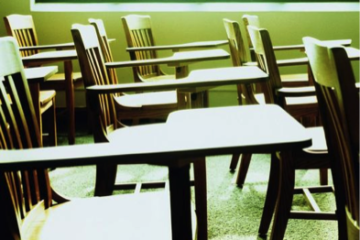The World Bank held the U.S. release of a new report — How Shanghai Does It – Insights and Lessons from the Highest-Ranking Education System in the World — on June 23, 2016. Lead author Xiaoyan Liang explained that report was conceived of two years ago after Shanghai shocked the world when it topped the international league tables on the OECD’s PISA’s assessment in 2009, the first year it participated.
Liang, who is Senior Education Specialist and the World Bank’s Education Team Leader for China, Malaysia, Mongolia, and the Republic of Korea, said the exceptional initial showing produced both interest and skepticism of the results. The report sought to answer the question of just how Shanghai was able to accomplish such a feat. It finds that Shanghai’s world-leading performance on international tests is “linked to a strong education system with efficient public financing” and it is a system that “translates smart education policies into excellent learning results.”
According to Liang, “One of the most impressive aspects of Shanghai’s education system is the way it grooms, supports, and manages teachers, who are central to any effort to raise the education quality in schools. The reason the teaching profession is regarded with a lot of respect in Shanghai is not just because teachers earn reasonable, stable salaries—it is also because of how well they teach. They are true professionals.”
To assess Shanghai’s system, the World Bank used its SABER benchmarking database. Assessing Shanghai using the SABER tool would both confirm its performance on PISA and help the world better understand the policies and practices that contributed to that performance, according to Liang.
The SABER system uses school surveys, interviews and literature reviews to evaluate multiple dimensions of education systems to produce comparative data and knowledge about education system policies and institutions. These dimensions include:
- Levels of education: early childhood, primary, secondary, workforce development, and higher education
- Resources: finance, teachers and health resources
- Governance: school autonomy and accountability, private sector engagement
- Information: assessment and education management information systems
- Complimentary inputs and cross-cutting themes: information and communication technologies and resilience
Based on the SABER framework and rubric, Shanghai scored “established” and “advanced” in almost all areas across four key educational domains: teachers, school finance, school autonomy and accountability, and student assessment.
The report highlights how Shanghai carefully plans, meticulously implements, and focuses on improving teaching and instructional excellence and calls this Shanghai’s “secret”. At the release event, Liang also highlighted Shanghai’s strategy of pairing high performing schools with low performing schools to raise performance of the low performing partner.
Marc Tucker, President and CEO of NCEE and a discussant at the report release event, highlighted the need for just the type of analysis that the World Bank did for this report: combining quantitative and qualitative data to help other countries really understand how Shanghai is able to achieve such strong results for its students.
“The OECD’s databanks alone cannot help us understand how systems achieve high performance,” said Tucker. He said the “central issue” in analyzing high performing systems is to understand the combination of policies that are most likely to create high performance for all students. In Shanghai’s case, he noted the power of the coherence of the jurisdiction’s education system and it’s relentless focus on improvement given that only forty years ago China was emerging from the Cultural Revolution and few people had more than basic literacy since education had been abolished.
The World Bank’s Harry Petrinos, World Bank Education Practice Manager for East Asia and the Pacific and another discussant at the release, echoed Tucker’s words when he concluded that this report showed that “…success is not a secret; it is the implementation of a good design.”
Since the launch of SABER in 2011, the World Bank Education Group has produced analytical, descriptive and evaluative reports on more than 100 countries around the world using the tool.





